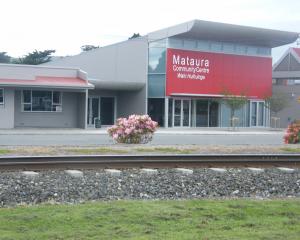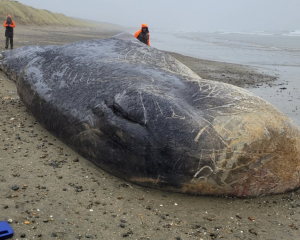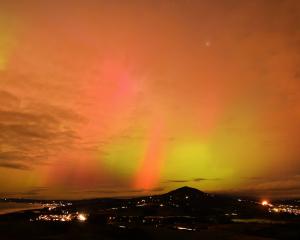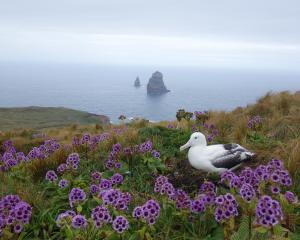A pest is spreading south across the Waitaki River and we're not talking about the Canterbury Crusaders rugby team. Hamish Maclean investigates why southern farmers should be worried about wallabies.
In 50 years' time, the Bennett's wallaby could be established in Otago as far south as Dunedin if the spread of the pest from South Canterbury continues.
A report co-authored by Lincoln-based Landcare Research research leader Bruce Warburton this year warns that with wallaby control unchanged, the marsupials which disrupt biodiversity and cause production losses for rural industries, could, in a worst-case scenario, cover one-third of the South Island.
And in some places people could be assisting the spread of the animal.
"[Wallabies] are going to keep on spreading if nothing is done,'' Mr Warburton said.
"And south of the Waitaki there is a significant area they could spread into. They could go over the Kakanuis and down into Naseby.
"There's enough habitat for them to spread. And if that spread is assisted by illegal releases, it will be a lot faster and potentially over a greater area.''
While the animals remain in a "containment area'' in South Canterbury, where populations were established for recreational hunting in the 1870s, the animals had been spotted north of the containment area as far away as Christchurch, were known to be in the Aoraki/Mt Cook area to the west and were discovered on the south bank of the Waitaki River in 2008.
Every year since, contractors with dog teams have been used there to control the animal.
However, a joint pilot project with Environment Canterbury and the Otago Regional Council later this month, testing the effectiveness of aerial surveys using cameras capable of thermal imagery, could prove to be a game-changer in the detection of wallabies in low-density populations.
Yet, just as Environment Canterbury contractors were conducting control work along the south bank of the Waitaki River last month, three live wallabies were sighted in North Otago.
There are no known breeding populations in Otago, but Otago Regional Council director of environmental monitoring and operations Scott MacLean said the sightings of wallabies in North Otago were reliable.
The animals were sought but not found.
Mr MacLean said one animal was seen near Trotters Gorge, one was seen at the end of Bushy Beach Rd on Cape Wanbrow, and one was seen in a driveway in Oamaru.
Surveillance work done by the council showed it was likely the animals had been brought into the area intentionally.
Mr MacLean said the animals seen in the Waitaki district were probably former pets, something he found "extremely disappointing''.
"It beggars belief, really,'' he said.
"It is a worry.''
The Biosecurity Act details penalties for knowingly releasing wallabies, of up to five years' imprisonment or a $100,000 fine.
Mr Warburton said the strategy of containment was "probably the correct one''.
"It's just the resources haven't been available.''
Environment Canterbury biosecurity team leader Brent Glentworth said stopping the spread of the pest species was a "very complex problem''.
He called the animals "cryptic'': they are nocturnal, often solitary and hard to spot.
With food sources becoming scarce at the onset of winter, a poisoning effort was under way in the Mt Cook area now, but earlier in May the council's contractors were on the south bank of the Waitaki River.
Two Environment Canterbury contractors shot and killed eight wallabies south of the river in two weeks last month.
Five were males and three females each had a joey in its pouch.

However, this year's numbers halfway through the year were down on last year.
"There's about 72,000ha on that south bank of the Waitaki. That's a big chunk of dirt just on that south bank ... so ... we've been targeting areas of prime habitat.''
He said containment of the pests was "not a battle that Environment Canterbury can win on its own''.
Mr MacLean said "the biggest threat'' for Otago was natural dispersion over the Hawkdun Range.
"People releasing them are a nuisance. It takes up our resources ... but we do have a problem of a natural dispersion over the Hawkduns. That terrain is vast and it's snow tussock. Snow tussock is a lot taller than the wallabies and they are really hard to see.''
Mr Warburton said "the big challenge'' facing wallaby control work was the edge of the animal's distribution, where there were fewer animals. While a trial using thermal cameras was done under a fixed-wing plane in the containment area, the aerial survey of some areas south of the Waitaki River expected to start the week of June 20 would help to see if the technology can pick up the animals in populations with lower densities.
Mr Glentworth said Environment Canterbury had covered a lot of the area in helicopters before, but without thermal imaging, it had proven ineffective.
"If they are in high tussock or grey scrub it doesn't flush them, they just remain tight.''
If the pilot test of thermal imaging proved successful it would be a welcome "tool in the toolbox to find wallabies at really low incidences'', he said.
"That will be key to really increasing our effectiveness at to trying to find wallabies at ultra-low levels and destroy them.''
Meanwhile, this week Environment Southland biosecurity officers voiced concern that wallabies may have moved into Southland.
A dead wallaby was found in central Southland last month.
The council had not been able to resolve whether the animal fell off a truck after being shot elsewhere, or whether it was living in the area and was run over. Environment Southland biosecurity manager Richard Bowman said there had been ‘‘a little bit'' of feedback from the public and inquiries were made in the area, but so far, the mystery remained unsolved.
One of the pieces of information it had gleaned though, was reports of dead wallabies being found around the Arrowtown area.
"Obviously, we're keen to know if there's any likelihood of a population being present here, because we want to deal with them sooner, rather than later, before they got more established,'' he said.
Southland has wallabies listed as a pest animal under its Regional Pest Management Strategy.












